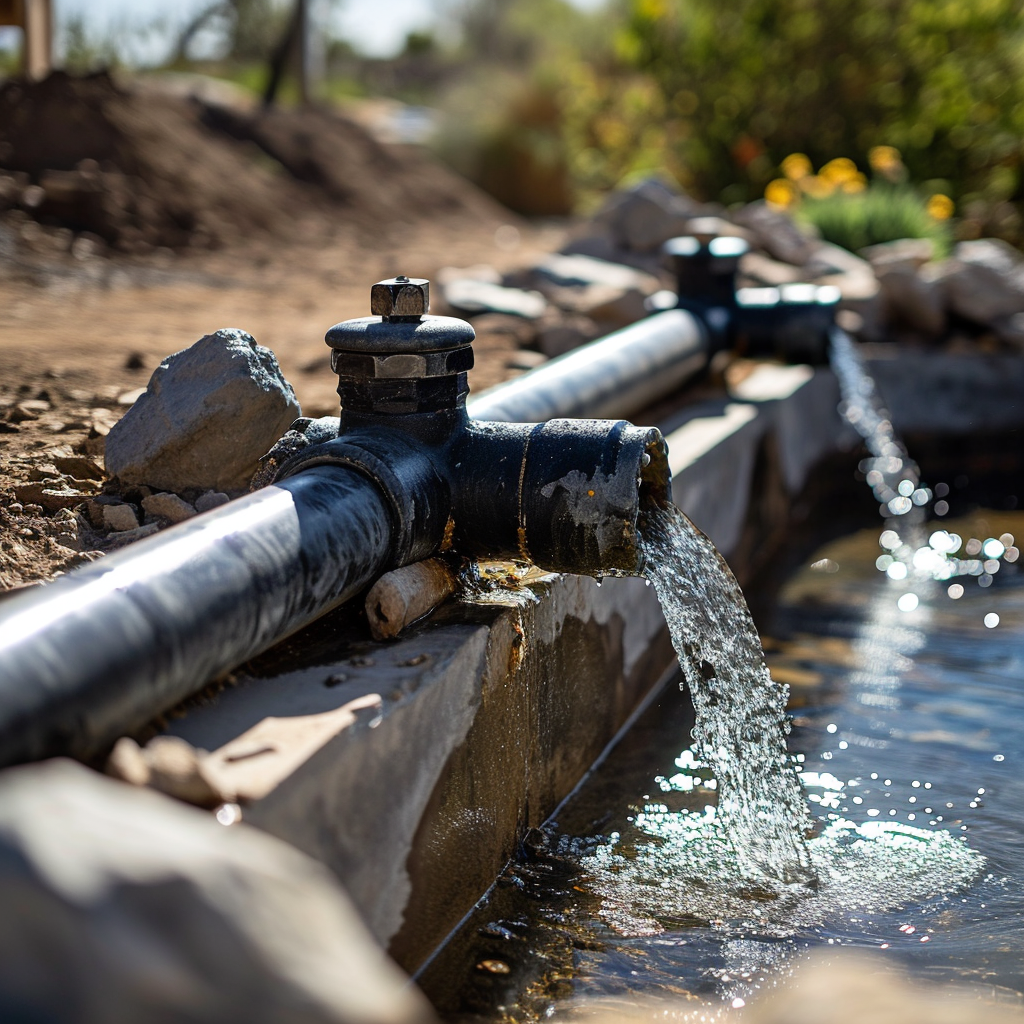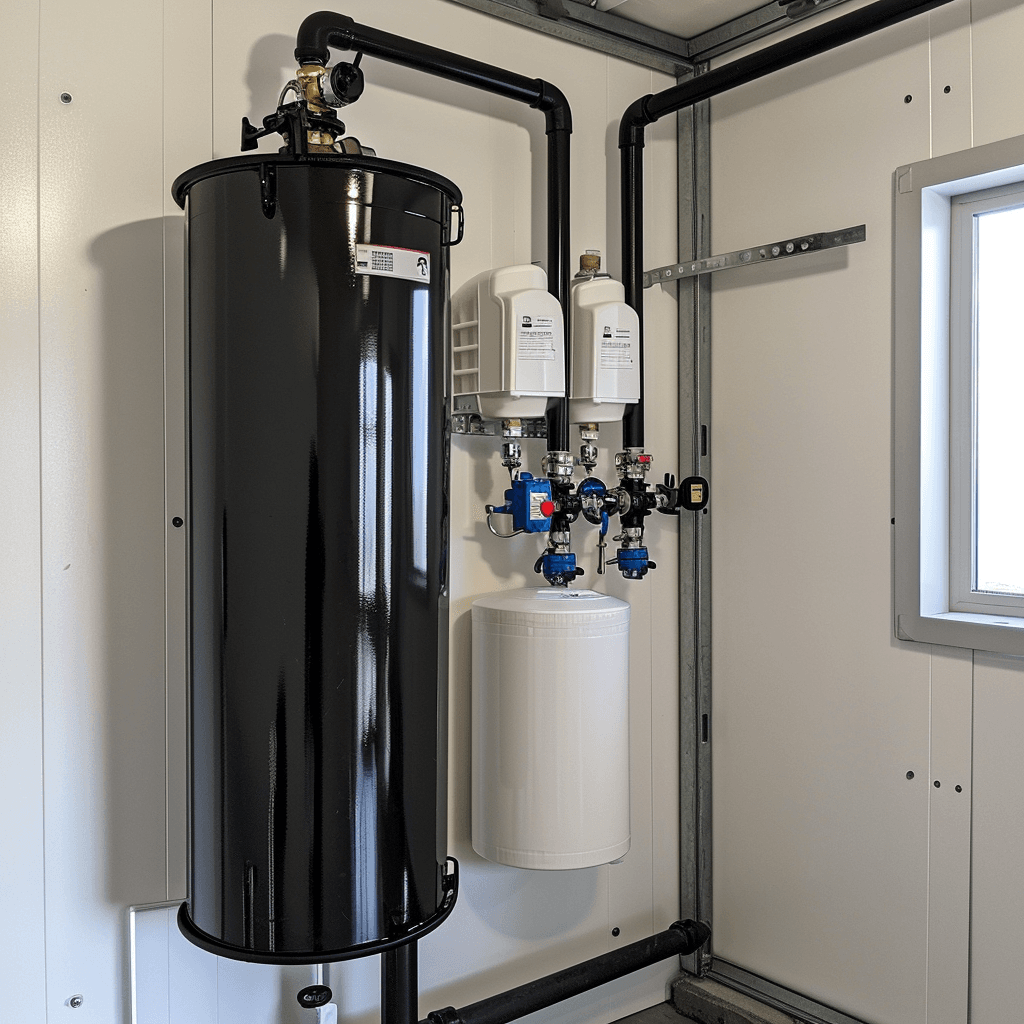Have you ever wondered how people who live off the grid are able to access water without relying on traditional plumbing systems? Well, one popular method is through gravity fed water systems. Sounds intriguing, right? In this article “How do you gravity feed water?”, we’re going to dive into the details of how these systems work and how you can set one up for yourself. Trust me, by the end of this, you’ll have a whole new understanding of gravity fed water.
So, let’s jump right in. Gravity fed water systems operate based on one simple principle: the force of gravity. Basically, the system is set up in a way that allows water to flow downwards, using the natural force of gravity to do all the work. Imagine a water tank located at a higher elevation than your home. The water from the tank flows down through pipes and into your faucets, showerheads, and toilets. It’s a pretty straightforward concept, but the devil is in the details, my friend.
In order to make a gravity fed water system work, you need to ensure a few things. Firstly, you need a reliable water source at a higher elevation that can fill the tank. This could be a spring, a well, or even a stream. Secondly, you need a well-designed piping system that allows for a steady flow of water from the tank to your home. Lastly, you need to account for the water pressure. Since you’re relying solely on gravity, it’s important to calculate the correct pipe diameter and elevation to ensure a sufficient and consistent water pressure throughout your home.
In conclusion, gravity fed water systems are a fascinating and practical solution for those living off the grid. We’ve only scratched the surface here, but hopefully, this has piqued your interest and left you eager to learn more. In the full article, we’ll explore the advantages and disadvantages of these systems, as well as provide some handy tips for setting up your own gravity fed water system.
Understanding Gravity Fed Water Systems
Living off the grid requires self-sufficiency in many aspects, including water supply. Gravity fed water systems offer a reliable and sustainable solution for obtaining water without relying on external sources. In this article, we will explore the various aspects of gravity fed water systems, including their components, benefits, installation, maintenance, and troubleshooting. We will also compare them with other water supply options and provide examples of successful systems. By the end, you will have a comprehensive understanding of gravity fed water systems and how they can meet your water needs.
Overview of Gravity Fed Water Systems
Gravity fed water systems work on a simple principle – using the force of gravity to transfer water from a source to a desired destination. These systems utilize the natural slope and elevation of the land to create water flow. They are commonly used in off-grid or remote areas, where access to electricity or pressurized water is limited or unavailable.
Components of a Gravity Fed Water System
A typical gravity fed water system consists of several key components. The first component is the water source, which can be a spring, well, creek, or rainwater catchment system. The water is then collected and stored in a reservoir, also known as a storage tank. This tank should be positioned at an elevation higher than the delivery point to ensure proper water flow.
To regulate the flow of water, a control valve or gate valve is installed at the outlet of the storage tank. This valve allows you to control the amount and speed of water flowing through the system. From the control valve, the water is transported via a series of pipes known as the distribution network. This network will connect the storage tank to the various delivery points, such as faucets or irrigation systems.
Benefits of Gravity Fed Water Systems
Gravity fed water systems offer numerous benefits, making them an attractive option for off-grid living. Firstly, these systems are completely independent of electrical power, making them highly reliable and sustainable. You won’t need to worry about power outages or unreliable electricity supply affecting your water availability.
Additionally, gravity fed systems are low maintenance compared to other water supply options. Since there are no complex mechanical components involved, the chances of system failure are minimal. This reduces the need for frequent repairs and maintenance, saving you both time and money.
Gravity fed water systems also have a relatively low environmental impact. They do not require pumping, which eliminates the need for energy consumption and reduces carbon emissions. By relying on gravity, you are making a more sustainable choice for your water supply.
Factors to Consider for Gravity Fed Water Systems
Before installing a gravity fed water system, there are several factors you should consider. The first is the topography of your land. You need to ensure that there is a sufficient slope or elevation difference between the water source and the delivery point. Steeper slopes will result in faster and more consistent water flow.
Another consideration is the distance and elevation gain between the storage tank and delivery points. If the distance is too far or the elevation gain is significant, you may experience a decrease in water pressure. It is crucial to calculate the head pressure – the vertical distance between the water source and the delivery point – to ensure an adequate flow rate.
Installation of a Gravity Fed Water System
Installing a gravity fed water system requires careful planning and execution. The first step is identifying the water source and determining its flow rate and capacity. This information will help you select an appropriately sized storage tank and design the distribution network.
Once you have chosen the right components, it’s time to determine the best placement for the storage tank. Ensure that it is positioned at an elevated location, preferably on higher ground. This will ensure sufficient water pressure throughout the system.
Next, you will need to install the distribution network. Lay the pipes following the natural contour of the land, minimizing the use of fittings and bends. This will reduce friction and pressure loss, maximizing water flow. It is advisable to work with a professional plumber or a knowledgeable individual to ensure proper installation.

Maintenance and Troubleshooting of Gravity Fed Water Systems
Gravity fed water systems require minimal maintenance, but regular inspections are still necessary to ensure their optimal functioning. Periodically check the storage tank for any signs of leaks or damage. Also, inspect the distribution network for any blockages or leaks. Clear any debris or obstructions that may hinder water flow.
One common issue with gravity fed systems is airlocks. Air bubbles can get trapped in the pipes, preventing water from flowing smoothly. To resolve this, open the faucets in your system fully and allow them to run for a few minutes. This will help release any trapped air and restore water flow.
Comparing Gravity Fed Water Systems with Other Water Supply Options
When considering water supply options, it’s essential to compare gravity fed systems with other alternatives. Traditional water supply systems rely on pumps to generate pressure, which can be costly and environmentally unfriendly. In contrast, gravity fed systems offer a more sustainable and cost-effective solution.
Rainwater harvesting and well systems are common alternatives, but they may require additional energy inputs for pumping or water treatment. Gravity fed systems, on the other hand, provide a natural and self-sustaining solution that requires little to no external energy.
Examples and Case Studies of Successful Gravity Fed Water Systems
Numerous examples and case studies illustrate the success of gravity fed water systems. In rural areas of developing countries such as Nepal and Bolivia, gravity fed systems have provided reliable water access to communities where electricity is scarce. Even in developed countries, many off-grid homes rely on gravity fed systems for their water supply needs.
For instance, in the mountains of Colorado, a family operates a self-sufficient homestead that utilizes a gravity fed system for water supply. By harnessing the natural altitude difference between their spring and their home, they have created a reliable and sustainable water source without relying on electricity or pumps.
Common Challenges and Solutions for Gravity Fed Water Systems
While gravity fed water systems offer many benefits, they are not without challenges. One common issue is freezing during cold winters, which can cause pipes or storage tanks to burst. To prevent this, insulate all exposed pipes and tanks and consider burying them below the frost line. This will protect them from freezing temperatures.
Another challenge is sedimentation in the storage tank. Over time, sediment can accumulate, reducing the tank’s capacity and affecting water quality. Regular cleaning and maintenance can help prevent sediment buildup and ensure the longevity of the system.
Conclusion
In conclusion, understanding gravity fed water systems is essential for off-grid living. These systems offer a sustainable and reliable solution for obtaining water without external power sources. By utilizing the force of gravity, you can create a self-sustaining water supply system that requires minimal maintenance and has a low environmental impact.
When considering a gravity fed water system, it is crucial to assess the topography of your land, calculate head pressure, and carefully design the distribution network. Regular maintenance and troubleshooting will ensure optimal performance, while proper insulation and preventive measures can overcome common challenges.
By embracing gravity fed water systems, you can enjoy a self-sufficient water supply that aligns with your off-grid lifestyle and reduces your carbon footprint. So go ahead, harness the power of gravity and unlock a sustainable water solution for your off-grid living.




